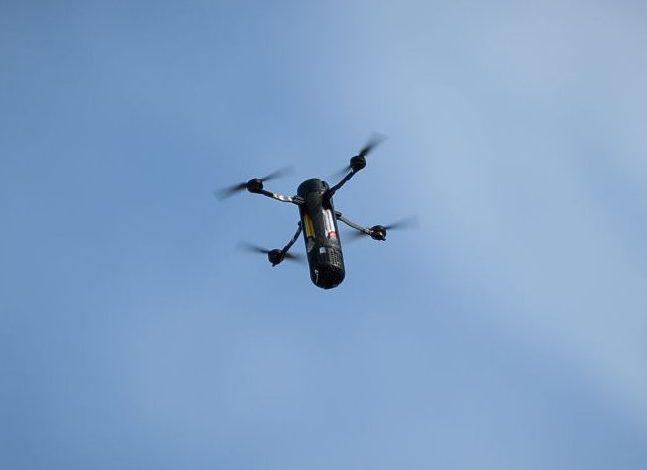
Ukraine is seeking out innovative weapons and other military equipment developed by Australian companies to give its troops a technological edge in their war against Russia.
In an interview for ASPI’s podcast, Ukraine’s ambassador to Australia, Vasyl Myroshnychenko, said Australia’s Bushmaster troop carriers had saved many Ukrainian fighters. So far, Australia has committed 60 Bushmasters—34 of which have been delivered—along with M113 armoured personnel carriers and six M777 howitzers.
The ambassador said Ukraine’s forces were outnumbered and outgunned, and for every shell Ukraine fired, Russia fired 10. ‘It’s important that Ukraine gets all the ammunition, all the guns we need to be able to keep on fighting.’ He said he was convinced Ukraine could win a conventional war.
‘It’s an existential fight for us. If Russians stop fighting, it’s the end of the war. If we stop fighting, it’s the end of Ukraine. However, Russia has more troops, more ammunition, more guns, more weapons and long-range missiles. Most important, Russia has nuclear weapons. We don’t.’
Farmers were still on their tractors and disabled men and women were making Molotov cocktails.
ASPI Executive Director Justin Bassi asked the ambassador if Kyiv had specifically requested the Australian-made DefendTex Drone40 now being provided to Ukraine. The D40 is a small ‘kamikaze’ drone that can be deployed manually or from a grenade launcher to destroy enemy troops, armoured vehicles and ammunition depots.
‘Absolutely,’ said Myroshnychenko. ‘These are basically fighting drones. We can inflict damage remotely and thus save lives of our personnel.’

He said he’d travelled extensively ‘exploring’ Australia’s defence industry in search of modern weapons. He’d discovered that Australia made some of the world’s best military communications equipment. Other materiel he’d requested included mine-detection systems. An Adelaide company made state-of-the-art batteries to be used by armed forces.
Australian companies made small, mobile ‘passive’ radar sets that allowed troops to identify approaching enemy aircraft without giving away their own positions. They could be carried in a backpack.
But, he said, Australia had very limited stocks of 155-millimetre artillery ammunition, and he hoped it would begin producing more. ‘Australia uses up to 15,000 shells per year in training. This is what Ukraine spends in three days.’
Precise long-range weapons such as the HIMARS rocket launchers provided by the United States allowed Ukraine to hit Russian supply depots.
Ukrainians had never been more united, he said. ‘Russian-speaking, Ukrainian-speaking, Jews, Muslims, Orthodox, Catholics, Protestants all together are now united to defeat Vladimir Putin and his troops in Ukraine.’
Myroshnychenko said the Ukrainian people wanted Putin put on trial at the International Court of Justice in the Hague for committing war crimes and crimes against humanity, inciting hatred, looting billions of dollars from the people of Russia, depriving Russians of a proper future, depriving Russians of their freedoms and human rights, and doing huge damage to the reputation of Russia. ‘Everything Russian is toxic,’ he said. ‘Russian culture is toxic, Russian poets are toxic, Russian people are toxic and that took Vladimir Putin just six months to achieve. How is he going to be remembered?’
Six months after the invasion, Russia now occupied 20% of Ukraine’s territory but Ukrainian forces were carrying out a counteroffensive in the south aiming to recapture territory in the Kherson area, the ambassador said. ‘It’s a very strategic region for us because this is where we have some major grain ports and we use the Dnieper River as a transporting route for other grain.’ Before the invasion, Ukraine was number four in the world in wheat exports and number one in the world in sunflower exports.
Kherson is where the Dnieper flows into the Black Sea and the river is an important transport route to the ports there. ‘We need to get rid of the Russians out of there to make an easy flow for other goods.’
Last year Ukraine had a record harvest of 107 million tonnes of grain. Domestically, it needed only three million tonnes. Normally, the rest was exported, much of it to the Middle East and Africa. Russia had forced a food crisis to blackmail the world to give up on Ukraine, he said. Exports had slowed to a trickle from the required five million tonnes per month and people were starving.
Myroshnychenko referred to Russia’s plans, long abandoned, to hold a victory parade in Kyiv soon after its invasion. Noting the savagery of Putin’s war, he said Ukraine opted this month to hold its own parade of destroyed Russian tanks and other military equipment, but President Volodymyr Zelensky’s government warned citizens not to assemble in large numbers. ‘This is something Russians do not like. They get rattled, and they may retaliate in a very nasty way,’ Myroshnychenko said. ‘So it’s important we don’t congregate in large numbers anywhere in any big city of Ukraine and try to stay away from the main squares.’
Asked how long the war might last, Myroshnychenko said he didn’t have an answer. ‘I wish it ended today, tomorrow. It doesn’t look like it’s going to end that soon.’
The Russians thought it would be a quick war, and it was not. ‘When the war started, many analysts said that Ukraine wouldn’t last longer than three days.’
Much would depend on Ukraine’s allies, on countries like Australia and the US, on NATO allies and other partners, he said. ‘We need to get more military assistance. We need jets, we need tanks, we need long-range missiles. We need it all.’ The longer the war lasted, the more Ukrainians would be murdered and raped, he said. ‘It needs to be stopped. We can’t have this scale of war in the middle of Europe. The world cannot afford it.’